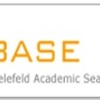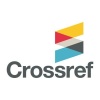Kemampuan pemecahan masalah matematis siswa berkemampuan awal rendah yang diberikan soal dengan teknik faded-example ditinjau dari teori Polya
Abstract
Full Text:
PDFReferences
Caballero, A., Blanco, L. J., & Guerrero, E. (2011). Problem solving and emotional education in initial primary teacher education. Eurasia Journal of Mathematics, Science and Technology Education, 7(4), 281–292. https://doi.org/10.12973/ejmste/75206
Clark, R. C., Nguyen, F., & Sweller, J. (2006). Efficiency in Learning: Evidence-Based Guidlines to Manage Cognitive Load. Pfeiffer.
Gartmann, S., & Freiberg, M. (1995). Metacognition and Mathematical Problem Solving: Helping Students to Ask the Right Questions. Metacognition and Mathematical Problem Solving: Helping Students to Ask the Right Questions, 6(1).
Handayani, I. G. A., Sadra, I. W., & Ardana, I. M. (2014). Pengaruh model siklus belajar 5e berbasis pemecahan masalah terhadap kemampuan pemecahan masalah matematika ditinjau dari pengetahuan awal siswa. Jurnal Pendidikan Dan Pembelajaran Matematika Indonesia, 3(1).
Hmelo-Silver, C. E. (2004). Problem-Based Learning: What and How Do Students Learn? Educational Psychology Review, 16(3), 235–266. https://doi.org/10.1023/B:EDPR.0000034022.16470.f3
Kalyuga, S. (2008). Relative effectiveness of animated and static diagrams: An effect of learner prior knowledge. Computers in Human Behavior, 24(3), 852–861. https://doi.org/https://doi.org/10.1016/j.chb.2007.02.018
Kilpatrick, J., Swafford, J., & Bradford, F. (2005). Adding It Up: Helping Children Learn Mathematics. In Social Sciences. National Academy Press.
Leong, Y. H., Toh, T. L., Tay, E. G., Quek, K. S., & Dindyal, J. (2012). Relooking ‘Look Back’: a student’s attempt at problem solving using Polya’s model. International Journal of Mathematical Education in Science and Technology, 43(3), 357–369.
NCTM. (2000). Principles and standards for school mathematics.
Nool, N. R. (2012). Exploring the metacognitive processes of prospective mathematics teachers during problem solving. International Conference on Education and Management Innovation, 30, 302–306. http://www.ipedr.com/vol30/59-ICEMI 2012-M10059.pdf
Oktaviani, K. N., & Retnowati, E. (2018). Faded-Examples for Learning Contextual Mathematics Problem-Solving Skills. Journal of Physics: Conference Series, 1097(1). https://doi.org/10.1088/1742-6596/1097/1/012114
Özsoy, G., Kuruyer, H. G., & Çakıroğlu, A. (2015). Evaluation of students’ mathematical problem solving skills in relation to their reading levels. International Electronic Journal of Elementary Education, 8(1), 113–132.
Paas, F., Renkl, A., & Sweller, J. (2003). Cognitive Load Theory and Instructional Design: Recent Developments. Educational Psychologist, 38(1), 1–4. https://doi.org/10.1207/S15326985EP3801_1
Pambayun, H. P., & Retnowati, E. (2018). Penerapan teknik faded examples untuk meningkatkan kemampuan pemecahan masalah materi pengayaan trigonometri SMA. Jurnal Riset Pendidikan Matematika, 5(1), 73. https://doi.org/10.21831/jrpm.v5i1.12149
Pimta, S., Tayruakham, S., & Nuangchale, P. (2009). Factors Influencing Mathematic Problem-Solving Ability of Sixth Grade Students. Journal of Social Sciences, 5(4), 381–385. https://doi.org/10.3844/jssp.2009.381.385
Polya, G. (1973). How to Solve It (2nd ed.). Princeton University Press.
Purnomo, D., Nusantara, T., Rahardjo, S., Pendidikan, D., Pascasarjana, M., & Negeri, U. (2014). Proses metakognisi matematis siswa dalam pemecahan masalah. In Prosiding Seminar Nasional Matematika Dan Pendidikan Matematika, 5(1), 67–76.
Renkl, A., Atkinson, R. K., & Große, C. S. (2004). How Fading Worked Solution Steps Works – A Cognitive Load Perspective. Instructional Science, 32(1), 59–82. https://doi.org/10.1023/B:TRUC.0000021815.74806.f6
Ruseffendi, E. T. (2006). Pengantar Kepada Membantu Guru Mengembangkan Kempetensinya dalam Pengajaran Matematika untuk Meningkatkan CBSA. Tarsito.
Schoenfeld, A. H. (2016). Learning to Think Mathematically: Problem Solving, Metacognition, and Sense Making in Mathematics (Reprint). Journal of Education, 196(2), 1–38. https://doi.org/10.1177/002205741619600202
Utami, R. W., & Wutsqa, D. U. (2017). Analisis kemampuan pemecahan masalah matematika dan self-efficacy siswa SMP negeri di Kabupaten Ciamis. Jurnal Riset Pendidikan Matematika, 4(2), 166. https://doi.org/10.21831/jrpm.v4i2.14897
Utari, R. S., Saleh, T., & Indrayanti. (2015). Pelaksanaan Pembelajaran Matematika dengan Model Project Based Learning (PBL) di Kelas X SMA Negeri 1 Indralaya. Prosiding Seminar Nasional Pendidikan: Revolusi Mental Melalui Pendidikan Hati Untuk Mewujudkan Pembelajaran Matematika Yang Menyenangkan, 309–317.
Wahyu, A., Wibowo, T., & Kurniawan, H. (2019). Analisis Kemampuan Looking Back Siswa dalam Pemecahan Masalah Matematika. Prosiding Sendika, 5(1).
DOI: http://dx.doi.org/10.48181/tirtamath.v4i1.16069
Refbacks
- There are currently no refbacks.
Copyright (c) 2022 TIRTAMATH: Jurnal Penelitian dan Pengajaran Matematika
Ciptaan disebarluaskan di bawah Lisensi Creative Commons Atribusi 4.0 Internasional .
Tirtamath: Jurnal Penelitian dan Pengajaran Matematika. Jurnal ini diterbitkan oleh Program Studi Magister Pendidikan Matematika Universitas Sultan Ageng Tirtayasa (cetak) dan Jurnal Untirta (eprint).
Alamat Penerbit: Program Studi Magister Pendidikan Matematika Kampus FKIP Untirta Jl. Ciwaru Raya, Cipare, Kec. Serang, Kota Serang, Banten 42117, Email: [email protected] |Klik untuk mengakses: Tirtamath: Jurnal Penelitian dan Pengajaran Matematika






